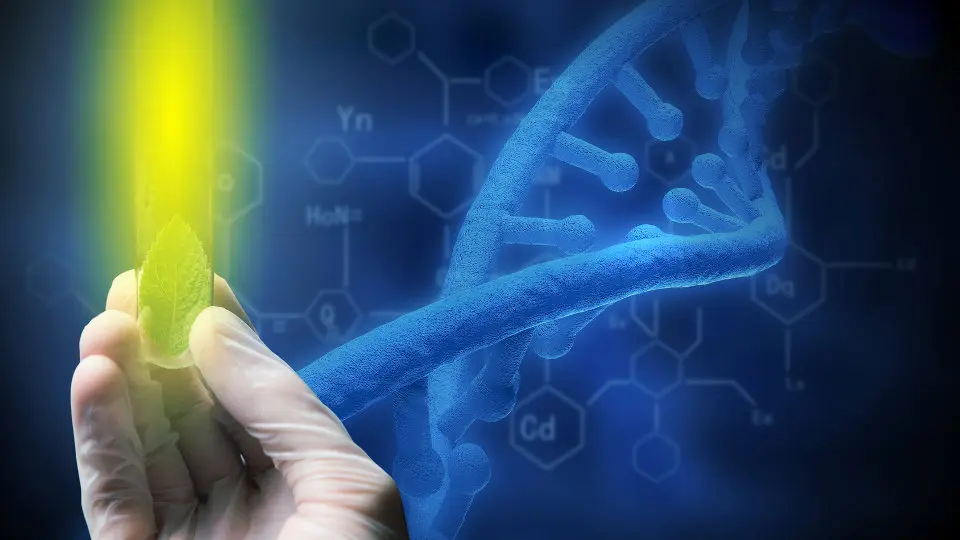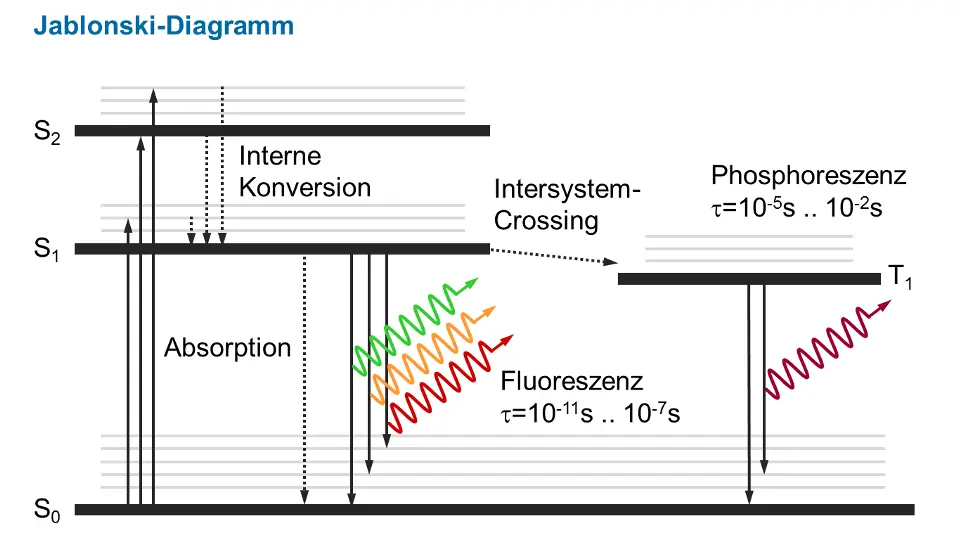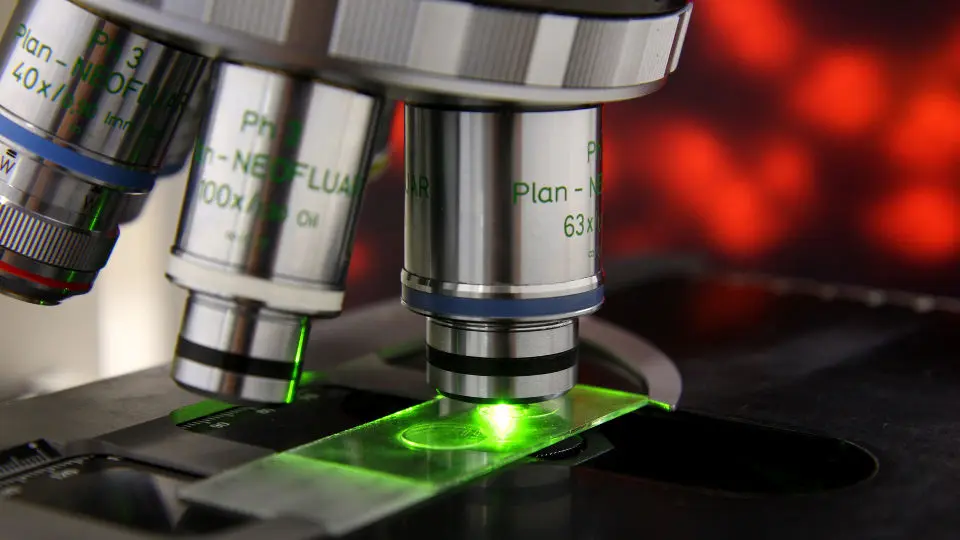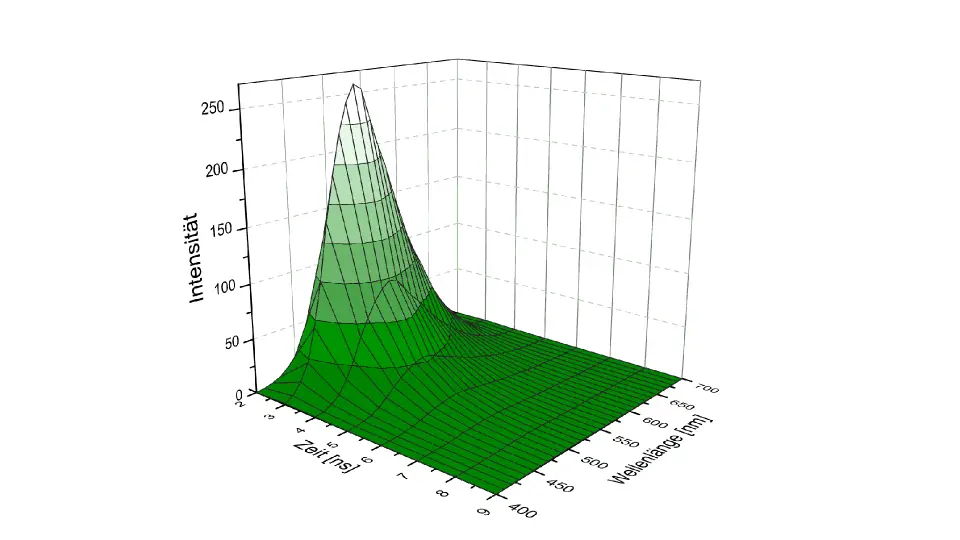
Laser-induced fluorescence (LIF)
The measurement of laser-induced fluorescence (LIF) is a widely used method that enables extremely high detection sensitivities up to single molecule detection. LIF is widely used in research, bio- and environmental analysis and medical diagnostics.
- Solid, liquid and gaseous samples, biological samples (tissue)
- Non-contact and non-destructive
- Intrinsic fluorescence and marker fluorescence
- Simultaneous detection of multiple fluorescences
- Measurement of fluorescence lifetimes and polarization
- Two- and multi-photon induced fluorescence
Principle of laser-induced fluorescence
The laser beam is absorbed by the sample. This excites the sample molecules into a higher electronic state. When relaxing to the ground state, the molecules emit fluorescence quanta at higher wavelengths than the laser wavelength and with characteristic lifetimes. Highest detection sensitivities can be achieved by separating the fluorescence from the laser radiation using suitable filters. Using short-pulsed lasers with femto-, pico- or nanosecond pulse durations, the speed at which the excited molecules relax can be measured. Typically, the fluorescence lifetimes are in the picosecond to nanosecond range. In the case of “forbidden” electronic transitions, however, lifetimes of micro- or milliseconds can also occur. Such long-lived fluorescence is extremely interesting for bioanalytical applications.


Micro- and macroscopic LIF
Fluorescence measurements can be easily combined with microscope techniques. There are a number of methods in which samples are scanned in 2 and 3 dimensions with micrometer resolution and in which fluorescence lifetimes are also determined. These methods include confocal laser fluorescence microscopy, fluorescence imaging (FI), fluorescence lifetime imaging (FLIM) and multiphoton fluorescence tomography. These techniques are primarily used in research in the life sciences, in drug discovery and in laboratory diagnostics. LIF is also very well suited for macroscopic applications. Routine applications are, for example, quantitative real-time PCR, the analysis of fluorescence assays in pharmaceutical research/development or laboratory diagnostics or in forensics. The simple combinability with fiber optic probe technology is often used for remote or in-situ applications. If pulsed laser excitation, as is possible with nitrogen lasers from LTB Lasertechnik Berlin, is combined with gated detection technology (ICCD detectors), the fluorescence measurement can be made largely insensitive to ambient light.
2D laser-induced fluorescence
For 2D-resolved fluorescence spectroscopy, fluorescence emission spectra are usually recorded at continuously varying excitation wavelengths, thus creating an excitation/emission space. The vertical z-axis is formed by the fluorescence intensity. Combined with chemometric data analysis methods, applications in process analysis can be developed. A special standard feature of the LIMES fluorescence spectrometer is the ability to record 2D fluorescence spectra, whereby the decay behavior of the fluorescence is mapped on a nanosecond axis instead of the excitation wavelength. As the lifetime of the fluorescence is particularly sensitive to the structure and condition of the sample (binding state, pH value, microenvironment, aggregate state, etc.), this time dimension can be used to develop new analytical methods for a wide range of applications.


